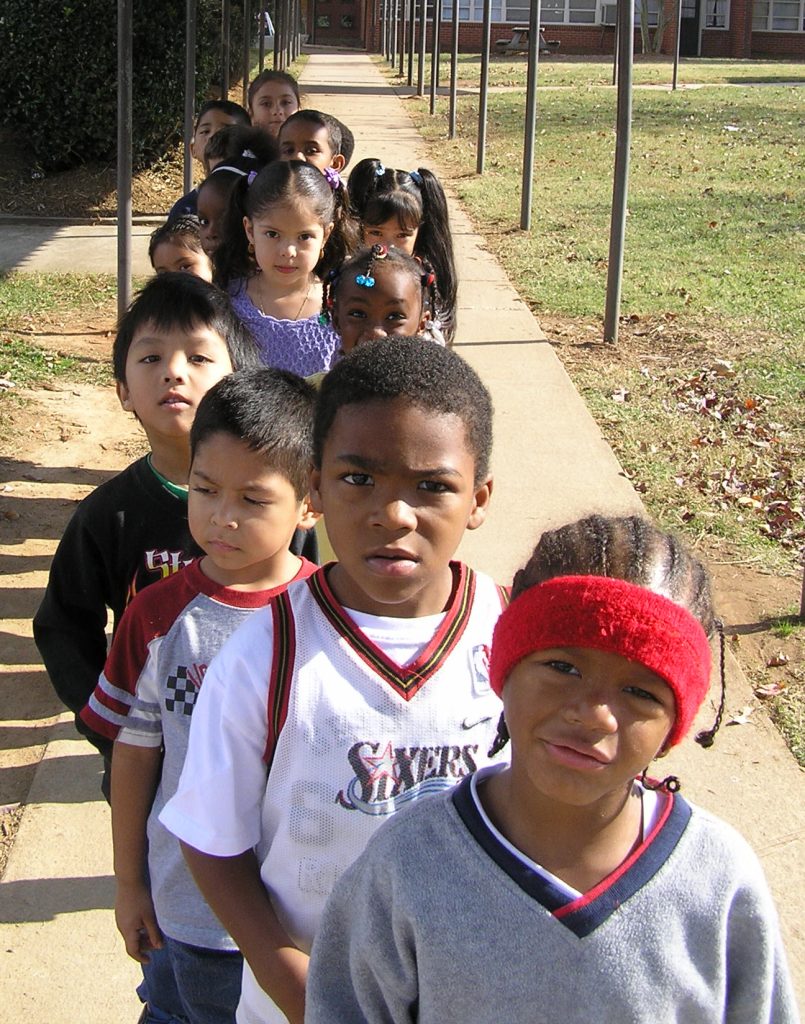Overview and resources for Implementing Model Projects in schools.
 Concept-Based Curriculum Implementation Guide
Concept-Based Curriculum Implementation Guide
The Concept-Based Curriculum Implementation Guide contains all of the resources available to implement a Bright IDEA Model. The ability to implement the model requires teachers, principals and curriculum administrators to: 1) understand all of the research and methodologies involved within the model: 2) conduct training and develop lessons and units around the model; 3) implement the model in the classroom; and 4) evaluate the fidelity of the model. (AAGC and Exceptional Children Division, North Carolina Department of Public Instruction, 2001, revised, 2004 and 2014.)
Concept-Based Curriculum Units
The Bright IDEA’s Concept-Based Curriculum Unit Template (Hargett, 2001) was developed to integrate a number of national researchers’ work on different facets of theory and practice (i.e., Black, Bloom, Costa, Erickson, Frasier, Hargett, Kallick, Kaplan, Marzano, McTighe, Moirao, Parks, Silver, Strong and Wiggins). This template provides a framework for integrating state and common core standards, big ideas, thinking skills, habits of mind, gifted behaviors, understanding by design and performance tasks and assessments by learning styles.
Concept-Based Curriculum Units are designed around universal concepts (Kaplan, 1991) and Big Ideas (McTighe/Wiggins) with gifted methodologies adapted for regular classroom teachers to use with all children, beginning in kindergarten and continuing through elementary grades. Taxonomies (Bloom and Marzano) are used as the foundation to build rigor into the learning tasks and targets in the units that lead to differentiating lessons for diverse learners.
Curriculum Design and Instructional Practice
The curricula design is built on the most advanced research and best practices and focused on empowering regular classroom teachers, principals and curriculum specialists, through training and mentoring, to become curriculum architects for designing interdisciplinary, concept-based curriculum units consistent with state standards, infused with Building Thinking Skills and Gifted Intelligent Behaviors, and to change the dispositions of educators and classroom environments to meet the learning styles, interests, abilities, skill levels and needs of all students.
Bright IDEA incorporates definitions and concepts on creativity and cognitive processes to help teachers design a concept-based curriculum within a multicultural context.
Teachers and principals are trained together in how to differentiate gifted pedagogy for all students through tiered lessons for academic success. They focus on the importance of universal concepts, thinking skills, learning styles, habits of mind and gifted behaviors for lifelong learning and they integrate all of these into concept-based curriculum lessons and units. The Bright IDEA curricula is based on selected universal concepts described by Kaplan in 1991 such as CHANGE; CHAOS; CONFLICT; EXPLORATION; PATTERNS; RELATIONSHIPS; SURVIVAL and SYSTEMS, (concepts are presented in capitalized form in Concept-Based Instructional Practice).
These concepts are developed in units of study across state standards in STEM and social studies disciplines, as well as integrated with the Common Core State Standards in English and math. Educators are also trained to teach content through a conceptual and multicultural lens and to help students make connections within and between disciplines. Such connections are essential in establishing the conditions for innovation and work in the future.
All students, even kindergartners, can learn how to analyze theories, problems, assumptions and perspectives, a body of rules, paradoxes, and abstract ideas through engagement with the Bright IDEA concept-based curriculum and problems in the real world.
Bright IDEA requires teachers and principals to undergo professional development together and to evaluate their dispositions toward students from diverse populations and socio-economic groups. They will learn to create scholarly environments that engage all students actively and consistently in sophisticated investigations of materials and performance tasks and to understand and apply advanced critical and creative processes. As a result the classroom environment is changed into differentiated problem-solving centers to increase background knowledge for all students so they can meet performance tasks and become independent learners.